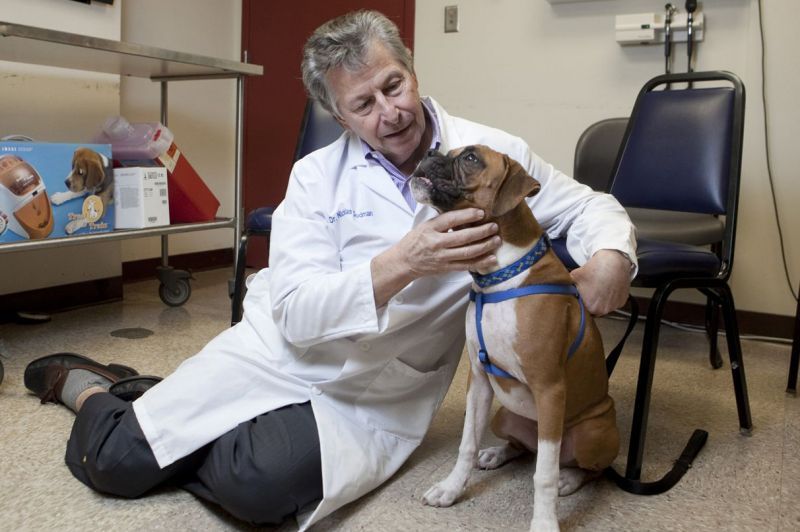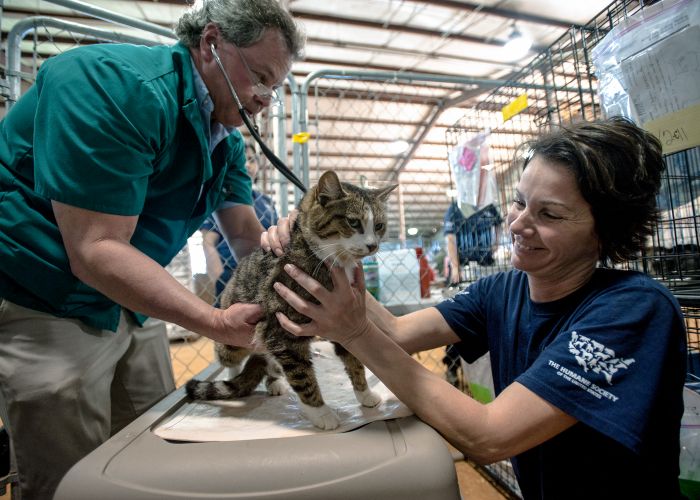Career spotlight: Understanding veterinary behaviorists
When to call these hard-to-find experts for behaviorally challenged pets

If you haven’t heard of veterinary behaviorists, you’re not alone. This highly specialized group of veterinarians counts only 80 or so practitioners among its board-certified members, including 72 in the U.S., according to the American College of Veterinary Behaviorists.

A veterinary behaviorist for a dog is akin to a psychiatrist for a person, says Nicholas Dodman, a veterinary behaviorist who serves as president of the nonprofit Center for Canine Behavior Studies.
When a dog or cat begins to have a behavioral or physical issue, a trip to a veterinarian is the best first step. If the behavioral problem persists, the next stop is typically a certified dog trainer. (Dodman recommends contacting the Association of Professional Dog Trainers, whose members he likens to counselors, and while they have “dog” in their title, some also specialize in cat behavior.) If the problem persists, next are certified applied animal behaviorists, a group Dodman sees as parallel to psychologists, who work to improve human behavior but typically cannot prescribe medication. A veterinary behaviorist would be the final step.
“If you see a certified applied animal behaviorist ... they may say, ‘I really think that this problem would be better served with some medication.’ In the human world, you’ll go to see a psychiatrist. For the animal world, the veterinary behaviorist is in effect a psychiatrist, because we can diagnose and treat with regular medicines and behavior-modifying drugs,” Dodman says. Like a psychiatrist, a veterinary behaviorist specializes in medical management of more serious or severe behavioral issues, delving more deeply into behavioral problems, often via initial evaluations that last 60 to 90 minutes.
He adds that each scenario may be resolved differently. “Sometimes the vet is knowledgeable enough to know once they’ve ruled out medical conditions that the problem … is beyond what training can do for you, and medicine is needed, so they refer directly to a veterinary behaviorist,” Dodman says. In other words, it’s possible to be referred directly from your local veterinarian to a veterinary behaviorist, who could then prescribe medications as appropriate.
“In the human world, you’ll go to see a psychiatrist. For the animal world, the veterinary behaviorist is in effect a psychiatrist, because we can diagnose and treat with regular medicines and behavior-modifying drugs.”
—Nicholas Dodman, veterinary behaviorist

When to call a veterinary behaviorist
As behavioral health resources grow, many shelters and rescues are able to provide support to pet owners and homeless pets who are struggling with a behavioral challenge. Veterinary behaviorists tend to charge a bit more than typical vets, says Valli Parthasarathy, a veterinary behaviorist in Portland, Oregon, who’s worked with local shelters and rescues, in part because of the years of specialized training they undergo, which includes a three-year residency under an established veterinary behaviorist, independent research and case reports.
But there’s good news for cash-strapped shelters: Both Parasarathy and Dodman say veterinary behaviorists (find one near you via your regular veterinarian or the ACVB at davcb.org) often look for cost-effective or free ways to help, whether through reduced-cost services or free training seminars for shelter and rescue staffers. So, when is calling a veterinary behaviorist a must?
“The bottom line is a veterinary behaviorist could help when it comes to strange, curveball behavioral cases,” Dodman says. “For example, a dog that keeps attacking its own hind leg (what’s known as ‘floating limb syndrome’), which isn’t something you could train out of a dog but instead [is] more indicative of past trauma.”
Or if a dog displayed “periodic bouts of really bizarre behavior”—such as growling at his food bowl for two or three minutes—Dodman says only a veterinary behaviorist “could diagnose that as a behavioral seizure with reasonable certainty.”
Some larger shelters may employ behaviorists as part of managing dogs, cats and even rabbits with behavioral challenges or to oversee enrichment protocols for an entire shelter population. Organizations on tighter budgets can save precious dollars by educating staff members and fosters to read animal behavior (perhaps asking a veterinary behaviorist for some group training) or consulting a behaviorist only for the most difficult cases, says Parthasarathy. She also recommends resources from the Fear Free certification program (fearfreepets.com), which is available at no cost to shelters.
“Animals don't learn in a vacuum. They're going to learn that when they do certain things, good things happen or bad things happen. And that's going to also change their outlook on everything that's going on at the same time.”
—Valli Parthasarathy, veterinary behaviorist
Adopting out behaviorally challenged dogs?
Of course, there’s also a difference between working with an animal in a stressful shelter situation, or even a foster home, and working with one after placement with an adopter. And while any pet could likely benefit from a veterinary behaviorist, not every nonprofit, rescue or shelter has the resources to implement potentially complex recommendations that may include medications, testing and training modifications.
“Between observable behavior and insights from previous history, shelter staff can predict with great certainty that a dog will have separation anxiety once adopted,” says Dodman, who sometimes recommends starting a medication routine in a shelter that can be continued with a new owner as a cost-effective measure. More aggressive behaviors, such as biting, are harder to predict, particularly when the pet’s history is unknown.
“For a dog with a bite history, the severity of the bite is key. If the dog doesn’t break skin or make contact in a bite, then that’s very workable,” Dodman says. “But if a dog has a repeated bite history or actually sunk its canines into human flesh, then that’s more complicated.” He says it’s important to consider dogs on a case-by-case basis, and he does recommend euthanasia when appropriate.

Parasarathy says that along with biting, some issues (such as separation distress resulting in extreme destruction, a dog who is “frozen” for long periods due to anxiety, or severe aggression toward other dogs) can make a dog nearly impossible to adopt out. Making a euthanasia decision is always difficult, but finding the balance between saving as many dogs as possible and keeping communities (and, secondarily, your shelter or rescue’s reputation) safe and intact is key.
“Keep in mind limited resources,” Dodman says, “as there are so many nonaggressive dogs in need of homes that are much more easily adoptable.”







